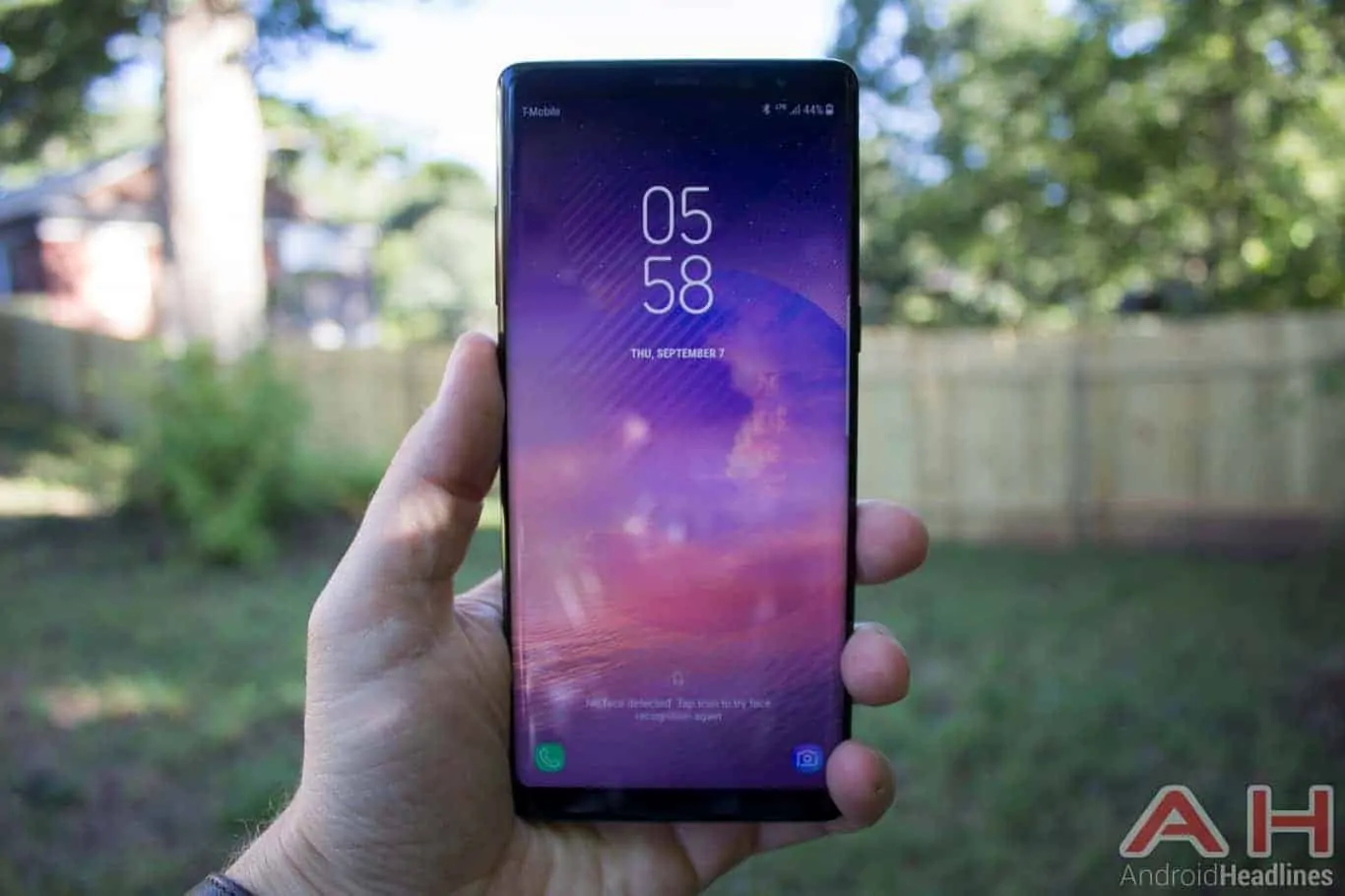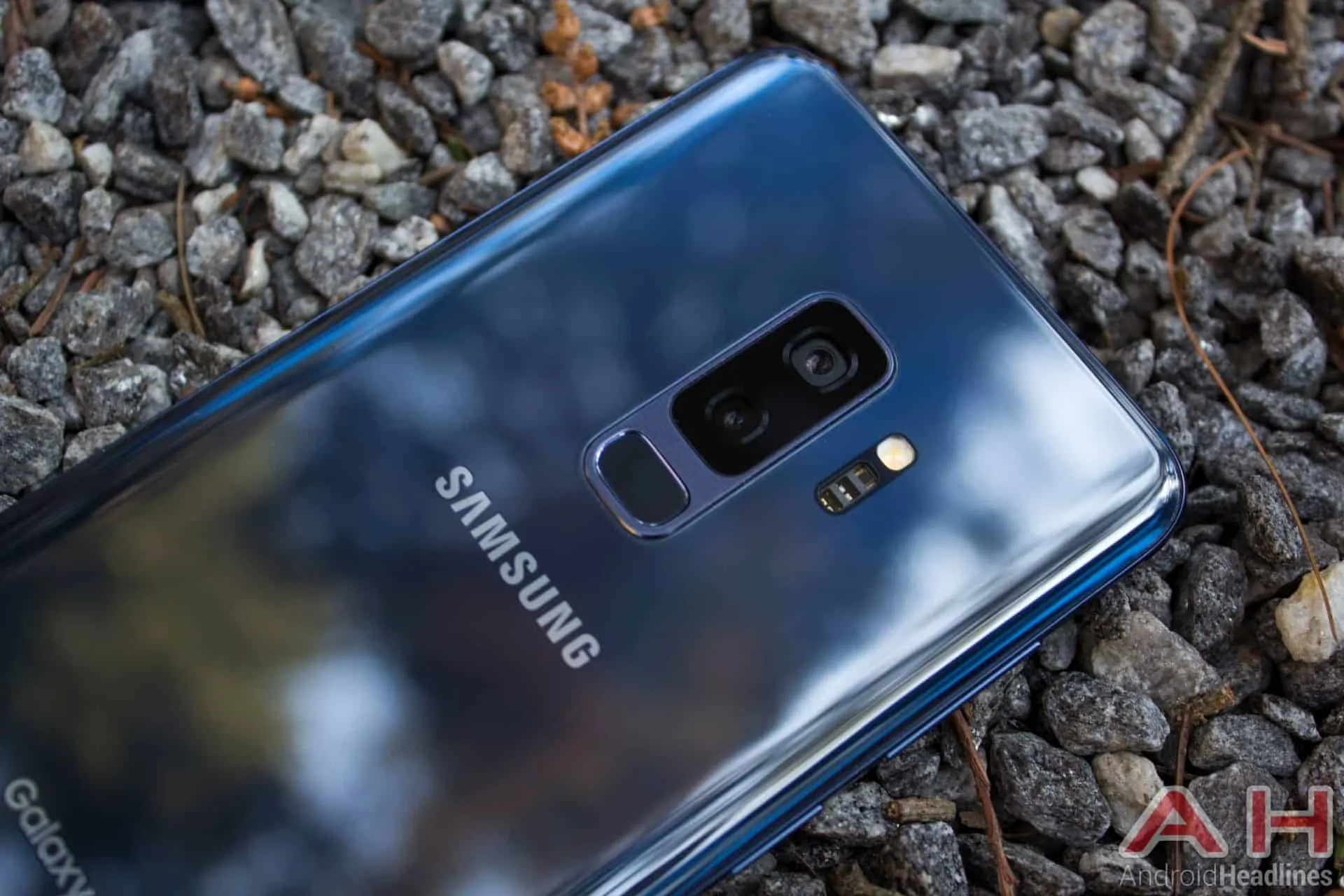Introduction
Do we have a good one for you today – the newest Samsung Galaxy S9 Plus takes on its big brother, the Galaxy Note 8. The Note 8 is Samsung’s latest in the ‘Note’ series and arrived on the scene in September 2017, while the Galaxy S9 Plus, the latest in Samsung’s ‘S’ series, arrived in March 2018. In all fairness, the Galaxy S9 and S9 Plus are aimed at a different audience. They are Samsung’s ‘bread and butter’ device, always out selling the Note model – in fact they outsell all Android devices. Whereas, the Galaxy Note 8 is more of a niche device for those that demand the S-Pen and the most advanced model Samsung sells. It is the most advanced model until the new ‘S’ Plus model arrives in which many of the previous Note features are incorporated. This fall, when the new Note 9 is expected to arrive for sale, it may once again take over its super flagship status.
When you compare the overall design of the Galaxy S9 Plus and Galaxy Note 8, you will see a lot of commonality. The S9 Plus is more evolutionary in design after the major overhaul done on the S8 series. The Note 8 on the other hand looks light years apart from the last Note 5 sold – you remember that Samsung skipped the ‘6’ to better align its numbering system and the Note 7, which is a little more similar, was taken off the market due to complications with its battery catching fire.
The Note 8 is only slightly physically larger and its display is only a tenth of an inch larger than the S9 Plus. They both use the same Super AMOLED display, although the S9 Plus has some small improvements. Both come with 6GB of RAM and a default of 64GB of expandable memory. Both have dual cameras with 2x Optical Zoom, but the S9 Plus is more advance in its design with its Adaptive Aperture and Super Dual Pixels. The Galaxy S9 Plus has a 200mAh larger battery than the Note 8, but both have Samsung’s Adaptive Charge and fast wireless charging.
Please take a careful look at the detailed specifications comparison chart below and here you will see just how these two high-end smartphones stack up against each other. After that, we will look at each mobile offering in more detail and point out some of its pros and cons. From all of this information, we will try to determine the winner based on overall specs, as well as the execution of design and functions.
Specifications

Samsung Galaxy S9 Plus

As I said earlier, the Samsung Galaxy S9 Plus is more evolutionary rather than revolutionary and looks very much like its predecessor, the Galaxy S8 Plus. There were slight design changes in where the curve of the display meets the metal frame that connects the front to the back of the device. These changes allow the user to easily pick up the phone and hold the phone without accidentally opening an app that may be close to the edge of the display. Besides the expected processor and GPU upgrade, the best improvements are the new dual camera and the new stereo speakers. The new Intelligent Scan combines the Facial Recognition and Iris Scanner to give the user a faster and more secure way to unlock their S9 Plus. Samsung also re-positioned the fingerprint sensor below the camera to help prevent finger smudges on the camera lens, but it would still be nicer if they could lower it even farther away. Still in its infancy, AR Emoji allows you to immortalize yourself as a digital avatar for use in social media – a great feature that needs a little more fine tuning.
Samsung gave the Galaxy S9 Plus a 6.2-inch Super AMOLED Infinity Display made better through technology upgrades as well as physical design – meaning that Samsung redesigned the curved display, making it easier to pick up and hold without launching any unwanted app by accidentally touching on the curved area. The resolution is 2960 x 1440 pixels with 531 pixels-per-inch (PPI). The S9 Plus sports an Always-On display that helps save battery life and is a real convenience to the user that allows them a quick way to decide if they want to open the phone to read the entire notification and respond. Gorilla Glass 5 protects both the front and back of the device.
The Galaxy S9 Plus – and the Galaxy Note 9 – are shipped with different processors depending where one is located. S9 Plus models sold in the US/China use the newest Snapdragon 845 octa-core processor clocked at 2.7GHz with a powerful Adreno 630 GPU for graphics, while models for the EMEA countries use an equally powerful Samsung Exynos 9810 octa-core processor clocked at 2.7GHz and a Mali-G72-MP18 GPU. The S9 Plus now packs 6GB (up from 4GB) of DDR4 RAM and a base of 64GB of expandable internal memory. Samsung will also sell models with 128GB or 256GB of memory, but it will depend on your area and carrier whether or not you can order one.
Critics were all wondering when Samsung would start using a dual camera setup on its devices. The Galaxy Note 8 received that honor, but that has led to the Galaxy S9 Plus receiving its dual camera status in even a bigger way. It sports a dual 12-megapixel camera setup with improved Super Dual Pixels, PDAF, OIS, 2x Optical Zoom, 10x Digital Zoom, and an LED flash. Found only on the main camera is the most exciting feature of the new camera – its new adaptive aperture that will give you an aperture that adjusts automatically and ranges from a large f/1.5 (low-light pictures) to a smaller f/2.4 (for bright situations). The second camera has a fixed f/2.4 aperture and is used for special effects. The front-facing camera (FCC) is a nice 8-megapixel lens with an aperture of f/1.7 that includes auto-HDR and autofocus.
The Galaxy S9 Plus uses a non-removable 3,500mAh battery that will certainly last most people throughout the day. If you need to charge your battery during the day, you have a choice of using Samsung’s Adaptive Charge or quick wireless charging for a fast charge. They will have you up and running again in no time, especially if you take advantage of the wireless charger on your desk.
The Samsung Galaxy S9 Plus has several improvements over the Galaxy Note 8. Starting with the new SD845 processor and Adreno 630 GPU – they are quicker, smoother, offer more features, and offer better battery life. Next up would be the new dual camera with Adaptive Aperture technology, the improved pixels and better placement of the camera and fingerprint sensor. On the Note 8, Samsung repositioned the fingerprint sensor to the right of the camera’s flash, but on the S9 Plus, it was positioned below the camera in an effort to eliminate finger smudges on the camera lens. Stereo speakers are a welcomed upgrade from the single speaker setup of the past, and they are not just window dressing – they really sound awesome. Intelligent Scan uses both Facial Recognition and Iris Scanning to allow quick access with more security when unlocking your S9 Plus. Samsung includes a new AR Emoji feature that allows the user to make their own Avatar, although still in its infancy stage, it has great promise.
The Galaxy S9 Plus has the usual Samsung goodies – Samsung Pay, side panels for quick access to your most used contacts or apps, Samsung Connect to access Samsung appliances and other home products, IP68 certification, heart rate monitor, SpO2 sensor, Bixby personal assistant, and an improved Samsung DeX that allows you to make your S9 Plus into a desktop computer. Android 8.0 Oreo, along with the new and less invasive Samsung Experience 9.0 (UI) ships on the new S9 Plus. The device measures 158.1 x 73.8 x 8.5mm and weighs in at 189 grams. It comes in Midnight Black, Coral Blue, Titanium Gray, or Lilac Purple, with Samsung announcing a new Red version in China. Retail pricing ranges from $915 to $930, but there are quite a few sales promotions going on.
Samsung Galaxy Note 8

Many users were happy that Samsung continued the Galaxy Note series after the Note 7 debacle and so far, it is smooth sailing with the Galaxy Note 8. It picked up the Infinity Display, eliminated the Home button in favor of onscreen buttons that only show up when you need them. The bottom bezel is void of any functions, while the narrow top bezel handles the earpiece/speaker, indicator light, proximity sensor, the iris scanner, and the FFC that also handles the facial recognition. The fingerprint sensor was moved to the outer banks of the LED Flash to make it harder to smudge the camera lens – a good idea that works most of the time. Samsung made improvements to the S-Pen and software to make it easier to use and more productive.
There are many differences between the Note 5 (the last one kept on the market) and the Note 8. For starters, we have the display size jumping from 5.7-inches to 6.3-inches. The Infinity Display jumped onboard, as did the 18.5:9 aspect ratio, newer Super AMOLED technology, and a QHD+ display. This new display pushes out 2960 x 1440 pixels that translate into 521 PPI. On the Note 8, you will find the same Always-On technology to save battery life and to make it easy on the user to decide if they really want to turn-on their device to read the full notification. Gorilla Glass 5 protects the front and the back of the Note 8, just like the S9 Plus.
The Galaxy Note 8 uses the Qualcomm Snapdragon 835 octa-core processor for the US/China models – the best that was available at the time and the predecessor to the SD845/Adreno 630. It is clocked at 2.35 GHz and uses an Adreno 540 GPU. For EMEA countries, Samsung uses its excellent Exynos 8895 octa-core clocked at 2.3 GHz and the Mali-G71 MP20 GPU for graphics – both processors use the new 10nm technology. The Galaxy Note 8 packs 6GB of DDR4 RAM that offers a smooth experience and fast multitasking. It has 64GB of expandable memory via a microSD card.
The Galaxy Note 8 is the first Samsung smartphone to receive a dual camera setup. It uses two 12-megapixel cameras with the main camera offering 2x Optical Zoom, a large f/1.7 aperture for lowlight shots, PDAF, an LED flash, Auto HDR, and OIS. The secondary camera has a smaller f/2.4 aperture and can help with bokeh effects. Samsung uses a nicely sized 8-megapixel FFC along with a large f/1.7 aperture, auto-HDR, and even includes autofocus.
Samsung included a non-removable 3,300mAh battery that should easily make it through the entire day. If you are a heavy user, and need to charge the Note 8, you can do so very quickly with its Adaptive Fast Charging plugged into the wall or its Quick Wireless Charging, designed for both Qi and PMA formats.
The Galaxy Note 8 also has the usual Samsung goodies – Samsung Pay, side panels for quick access to your most used contacts or apps. IP68 certification, heart rate monitor, SpO2 sensor, Bixby personal assistant, Samsung Connect that allows you to control Samsung appliances and other home electronics, as well as Samsung DeX that allows you to make your Note 8 into a desktop computer. Exclusive to the Note 8 is its S-Pen and its associated software that makes it even easier to access the Note 8’s capabilities. With drawing apps you can create a real work of art – not into art, you can take a simple note or make a shopping list.
The Note 8 is available in Midnight Black, Orchid Gray, Arctic Silver, Coral Blue, Maple Gold, and Rose Pink depending on what market you live in and what carrier you use. It comes with Android 7.0 (Nougat) out-of-the-box, but is now upgraded to Android 8.0 Oreo and Samsung Experience 9.0 (UI). The device measures 159.5 x 73.4 x 8.1mm and weighs in at 173 grams and will cost you about $950.
…And The Winner Is…

The Final Word
The Galaxy S9 Plus and Galaxy Note 8 may be targeting different audiences, but they have very similar features and cost about the same amount of money. You could not go wrong with either of these devices – each are beautiful and feature packed. If you are more into taking photos and having the latest processor and GPU, then you would want the Galaxy S9 Plus. If you enjoy doodling, doing some serious drawing, or just enjoy using the S-Pen for taking notes, typing or game play, then the Galaxy Note 8 would be your phone of choice.
As much as I love using the S-Pen, I am going with the Galaxy S9 Plus as the winner of this comparison. It has the most up-to-date processor and GPU for even faster processing than the Note 8. Its display is almost as large and has alight improvements over the Note 8’s. Even though the Note 8 has a dual camera setup, the S9 Plus’ camera has the new Adaptive Aperture and Super Dual Pixels to enhance the camera area over the Note 8. The S9 Plus has a terrific set of stereo speakers pumping out the sounds and the new Intelligent Scan for even faster and more security when unlocking your device.
The Galaxy Note 8 is a superb smartphone and so much more with its S-Pen ability – but not everybody needs an S-Pen or note-taking abilities on their smartphone. The Note 8 is now running on an Android 8.0 Oreo upgrade and matches the S9 Plus with 6GB of RAM, but still lacks the newest processor/GPU and the latest in camera technology – and still costs about $30 more. Only you can determine if you want the extra features that the Note 8 provides or the latest technology from Samsung, found in the Galaxy S9 Plus.
Buy The Samsung Galaxy S9 Plus Buy The Samsung Galaxy Note 8

